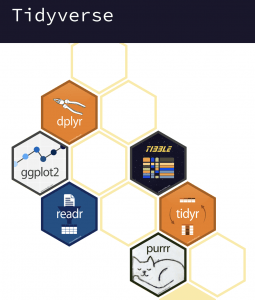What is R?
R is a programming language that is similar to popular languages like C++, Java, and Python. It is a free software package that provides an environment for statistical computing and data visualization that can be run on Windows, MacOS, and UNIX systems. The R community is made up of a large base of users and developers that write and distribute packages that are used to perform statistical (e.g., time-series) and/or graphical (e.g., box-plot) functions. These packages are made available through a network of ftp and web servers around the world that store identical, up-to-date, versions of code and documentation. R can be run as a standalone program, or with RStudio, a popular integrated development environment (IDE).
R at Lehigh
Here at Lehigh, students, faculty, and staff, have access to R and RStudio, through LUapps, a virtualized software system that allows a user to use software programs, without having to download them to their machine. LUapps can be accessed both on campus and off-campus (over VPN). For those interested in having the programs installed locally on their machines, downloads are available on R and RStudio’s websites (hyperlinks above). There are no licensing requirements, as both programs are open source and free.
Learning R takes practice. It’s similar to learning a musical instrument. There are many resources available on the internet to help with the process – some good, some not so good. Research Computing, a part of Library and Technology Services, offers a seminar/workshop series each semester, which includes three seminars on programming in R:
(1) Introduction to programming in R
(2) Data visualization with R
(3) Shiny Apps with R
The content of the seminars draw heavily on a collection of packages specifically designed for data science known as the Tidyverse.
